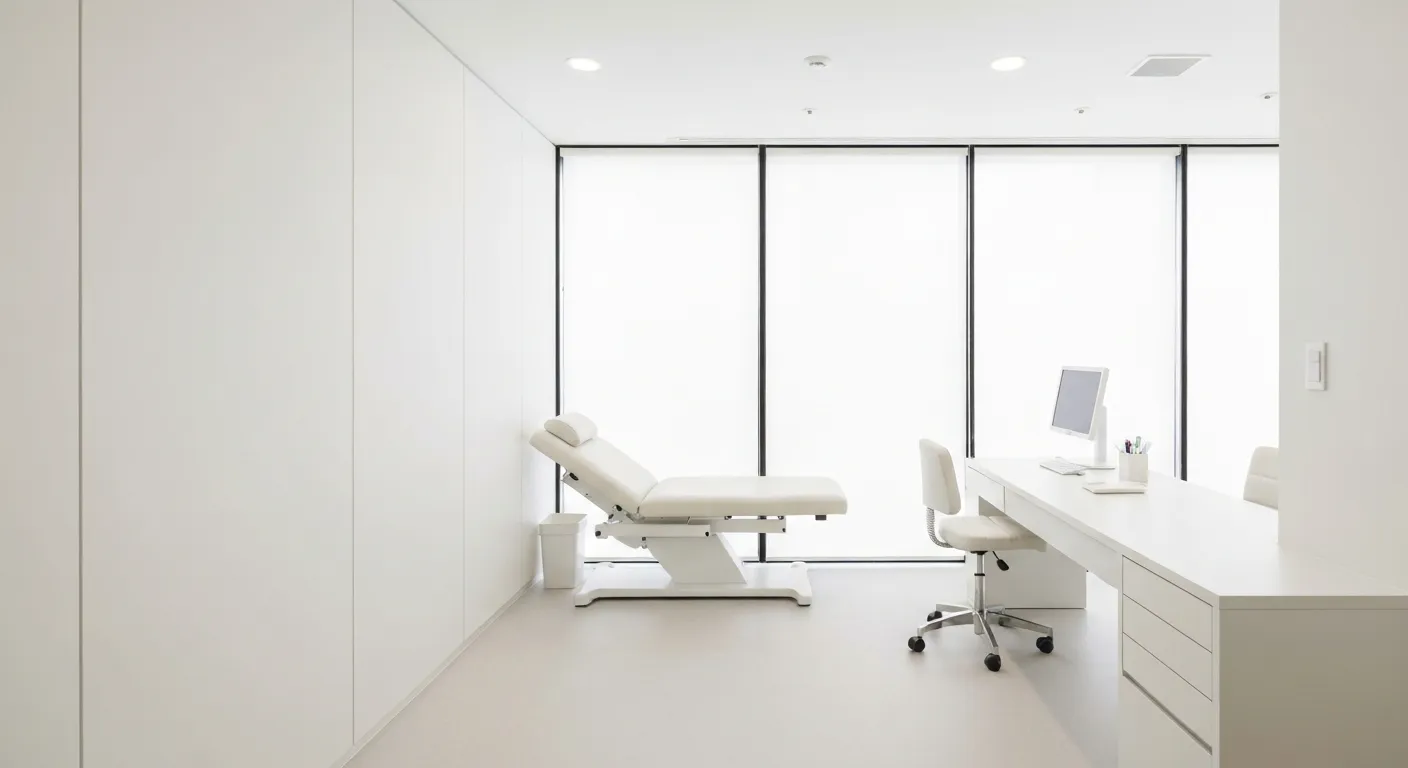
November 22, 2025
Taking Vitamin C Before Surgery An Expert Guide
Considering vitamin C before surgery? This guide covers the science-backed benefits for healing, potential risks, and crucial advice from surgeons.
Nov 21, 2025

Body contouring, also known as body sculpting, refers to cosmetic procedures designed to reshape specific areas of the body. These treatments focus on removing excess fat, tightening loose or sagging skin, and enhancing the body's natural contours to improve overall shape and appearance.
Importantly, body contouring is not a weight-loss method. While weight-loss reduces overall body mass, body contouring targets stubborn fat deposits and excess skin, especially when diet and exercise have failed to deliver desired results in specific areas.
Common treatment areas include the abdomen, arms, back, thighs, neck, chin, buttocks, and breasts. Patients who have experienced significant weight loss often seek procedures to remove lax skin and restore firmness in these zones.
The primary goals are to achieve more defined body parts, a smoother skin appearance, and a younger, firmer look. These outcomes not only enhance physical aesthetics but also improve patient confidence and comfort. Results can be immediate after surgical procedures or gradual following non-surgical treatments.

Surgical body contouring includes a variety of procedures designed to remove excess fat and skin, and tighten tissues to reshape the body. Common surgical treatments include:
These surgeries are typically recommended for patients who have achieved or maintained their ideal weight but have loose skin or uneven contours, often after significant weight loss. For more on body contouring after weight loss, visit this resource.
Nonsurgical options utilize advanced technologies to reduce fat and tighten skin without incisions. These methods include:
These treatments are typically suited for patients near their ideal weight seeking to reduce small, stubborn fat pockets or tighten skin without surgery. Multiple sessions may be required for optimal results. For a comprehensive overview of Non-Surgical Fat Reduction and Benefits of Nonsurgical Body Sculpting, see these resources.
Both surgical and nonsurgical body contouring target areas where fat deposits are resistant to diet and exercise or where excess skin affects appearance or comfort. Common areas include:
Surgical procedures are indicated when significant excess skin or fat needs removal and contouring, often post weight loss. Learn more about Body Contouring After Weight Loss. Nonsurgical treatments are preferred for modest fat reduction and skin tightening in localized areas with good skin elasticity, see Nonsurgical Body Contouring Methods and Non-invasive body contouring treatments.
Together, these diverse body contouring options provide personalized approaches tailored to patient needs and goals, enhancing body shape and confidence.

Body contouring primarily targets fat cells through controlled destruction methods that leverage temperature extremes or biochemical injections. Cryolipolysis (CoolSculpting®) exemplified by CoolSculpting®, uses precise cooling to freeze fat cells, causing them to crystallize and undergo natural elimination by the immune system. This method typically results in gradual fat reduction visible over several weeks to months.
In contrast, laser lipolysis like SculpSure® applies controlled heat to dismantle fat cells, with results increasingly evident within weeks after treatment. Injection lipolysis uses substances such as deoxycholic acid (e.g., Kybella®) to chemically break down fat cells, mainly used for targeted areas like the double chin, gradually improving contour.
In addition to fat reduction, skin tightening is crucial for a firm, youthful contour. Radiofrequency (RF) technologies, including truSculpt® iD and Venus Concept deliver controlled energy deep into the skin layers to stimulate collagen and elastin production, effectively tightening loose skin.
Advanced techniques such as Renuvion combining radiofrequency with helium plasma enhance skin contraction safely and minimally invasively. Laser therapies also contribute to skin tightening by promoting dermal remodeling.
These treatments eliminate fat cells selectively, ensuring they do not regenerate, leading to long-lasting sculpting effects if weight is maintained. Simultaneously, skin tightening improves elasticity, reducing sagging that may occur after fat loss or significant weight changes, enhancing overall body contour.
It is important to understand body contouring is not a substitute for weight loss. Instead, it is designed for individuals at or near their ideal weight who seek to refine their physique by addressing stubborn fat deposits and tightening loose skin that diet and exercise alone cannot resolve. By combining fat cell destruction and skin firming techniques, body contouring enhances definition and restores a youthful appearance efficiently and safely.

Before undergoing body contouring overview, patients typically have a comprehensive consultation with a board-certified plastic surgeon. This appointment includes discussing personal goals, expectations, and reviewing medical history. Detailed examinations, measurements, and photographic documentation help tailor the treatment plan precisely.
Medical history review focuses on factors affecting healing and anesthesia safety, such as smoking, medications, and chronic conditions. Physical assessment evaluates skin tone, fat distribution, and areas targeted for reshaping. Blood tests and imaging may be requested to ensure suitability for surgery. Learn more about the medical history and physical exam.
Surgical body contouring options are generally performed in accredited operating rooms or hospitals under general anesthesia, ensuring patient comfort and safety. Non-surgical procedures are commonly conducted in an office or clinic setting without anesthesia. See details on anesthesia in body contouring.
Surgical procedures vary from 45 minutes to several hours, depending on the extent of contouring and technique used, such as liposuction procedures or lifts. Non-surgical treatments last approximately 30 to 60 minutes, often requiring multiple sessions to achieve optimal outcomes. For information on surgical procedure details and nonsurgical body sculpting overview.
Post-surgery, patients often wear compression garments for up to six weeks to reduce swelling and support contouring results. Activity restrictions include avoiding strenuous exercise and heavy lifting for at least 3 months, with gentle movements encouraged to promote circulation. Learn about post-surgical recovery care and compression garment benefits.
Recovery from surgical body contouring ranges from several weeks to months, depending on the procedure's scope. In contrast, nonsurgical treatments generally allow patients to return to normal activities immediately, with minimal downtime. Review details on the recovery timeline for surgery and recovery after nonsurgical procedures.
Patients should monitor for signs of infection (redness, warmth, discharge), excessive bleeding, severe pain, fever, or swelling disproportionate to expectations. Immediate medical attention is advised if such symptoms occur to ensure prompt management and safety. More information about post-surgical complications to watch for and risks of nonsurgical body contouring.

Body contouring overview effectively reshapes targeted body areas by removing excess fat and skin, resulting in more defined and aesthetically pleasing body contours. It can address stubborn fat pockets resistant to diet and exercise, enhancing areas such as the abdomen, arms, thighs, back, and neck.
Procedures often include skin tightening treatments, which help reduce sagging and create a smoother, firmer skin surface. This is especially beneficial after significant weight loss when skin elasticity is compromised.
Body contouring overview can correct body asymmetries and unevenness, improving overall body proportions and achieving a balanced silhouette. This contributes to a natural and harmonious appearance.
Beyond cosmetic benefits, body contouring after weight loss offers functional improvements by alleviating problems caused by excess skin, including discomfort, skin irritation, difficulty with hygiene, and mobility limitations, enhancing physical well-being.
The improvements in body shape and comfort foster increased benefits of body sculpting, which can enhance mental health and overall quality of life.
Results from Body contouring overview are generally long-lasting as fat cells are permanently removed and excess skin excised. Maintaining a healthy lifestyle with proper diet and exercise supports sustained outcomes and the best aesthetic results.

Surgical body contouring carries risks such as bleeding, infection, anesthesia complications, and scarring. Patients may also experience nerve or tissue damage, poor wound healing, prolonged swelling or pain, and asymmetry. Careful surgical technique and post-operative care are essential to minimize these risks. For more information, see Risks of Surgical Procedures and Risks of Surgical Body Contouring.
Nonsurgical methods are generally safer with fewer side effects. Common risks include skin irritation, redness, swelling, rash, and temporary discomfort. While rare, unsatisfactory results may require additional treatments. Refer to Risks of Nonsurgical Procedures and Risks of Nonsurgical Body Contouring for details.
Smoking and pre-existing health conditions such as diabetes or vascular disease increase the risk of complications and impair healing. Candidates must be medically evaluated to ensure safety and suitability. See Preparing for Body Contouring Surgery and Consulting a Plastic Surgeon for more information.
Selecting an experienced plastic surgeon or qualified professional is critical to reducing risks and achieving optimal outcomes. Certification ensures thorough training and adherence to safety protocols. Learn more in Consultation with Plastic Surgeon and Qualified Physicians in Body Contouring.
Ideal candidates are those who have reached and maintained their goal weight with realistic expectations about outcomes. Thorough consultations help personalize treatment and set achievable goals. See Patient selection criteria for body contouring and Body Contouring Candidate Criteria and Consultation for Body Contouring for guidance.
Post-procedure monitoring detects early signs of complications such as infection or hematoma. Patients should promptly report concerns like excessive pain or unusual symptoms for timely medical intervention. More on this can be found at Post-Surgical Recovery Care and Post-Surgical Complications to Watch For.
Selecting the ideal body contouring procedure begins with a personalized consultation. Experienced plastic surgeons evaluate your medical history, body goals, and skin condition to tailor treatments suited to your unique needs.
Partnering with board-certified, skilled surgeons ensures safe procedures and optimal outcomes. Their advanced knowledge helps balance benefits against potential risks, providing clear expectations.
Understanding both surgical and nonsurgical options, including their advantages and possible complications, empowers you to make informed decisions. Surgical options offer more immediate changes, while non-invasive treatments typically allow quicker recovery.
For lasting effects, maintaining a healthy lifestyle with balanced nutrition and regular exercise is essential. Body contouring complements, but does not replace, these habits.
Consulting an experienced professional allows for an individualized plan that aligns with your goals and health status, ensuring a safe and rewarding body sculpting journey.

November 22, 2025
Considering vitamin C before surgery? This guide covers the science-backed benefits for healing, potential risks, and crucial advice from surgeons.

November 21, 2025
Does Latisse work for eyebrows? Get the science-backed answer. We explore results, proper use, side effects, and what to expect from this popular treatment.

November 21, 2025
A Comprehensive Overview of Body Contouring: Techniques, Benefits, and Recovery